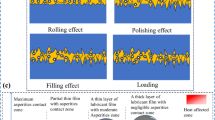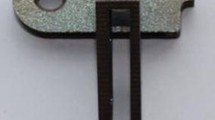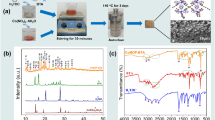Abstract
The mechanisms of action of a new generation of antiwear additives is studied here by means of energy‐filtering transmission electron microscopy (EFTEM) carried out on the wear particles generated during friction tests between two ferrous surfaces (under boundary lubrication conditions). This paper deals with the structural and physico‐chemical changes that colloidal particles, calcium carbonate (CC) and calcium borate (CB) overbased salicylates detergents, have undergone during the build‐up of the interfacial antiwear tribofilm. EFTEM allowed us to investigate the nature of wear fragments originating from the film, stemming from CC and CB micelles, and to make a comparison regarding the tribofilm formation mechanisms. It appears that the CC wear debris are mainly crystalline and contain a high concentration of iron (as abrasive iron oxide Fe2O3), limiting their antiwear action. Consequently, CC micelles do not lead to an effective protective tribofilm. On the other hand, CB micelles do have an antiwear action, which we explained by the formation of a glassy iron borate tribofilm during the friction tests. Many of the CB wear fragments are composed of this amorphous material containing very small crystallites of residual calcite. Boron (contained in the CB micelles) is responsible for the presence of amorphous zones of the film and acts as a glass former, in a comparable way to phosphorus in zinc dithiophosphate.
Similar content being viewed by others
References
Y. Zhanfeng, M. Kasrai, M. Fuller, G.M. Bancroft, K. Fyfe and K.H. Tan, Wear 202 (1997) 172.
P. Hoornaert, M. Hallouis and J.M. Martin, in: Proceedings of the Japan International Conf. of Tribology, Nagoya, Japan, 1990.
K. Inoue, Lub. Eng. 49(4) (1993) 263.
J.L. Mansot, M. Hallouis and J.M. Martin, Colloids and Surfaces 71 (1993) 123.
J.L. Mansot, M. Hallouis and J.M. Martin, Colloids and Surfaces 75 (1993) 25.
J.M. Martin, M. Belin and J.L. Mansot, ASLE Trans. 29(4) (1985) 523.
M. Belin, J.M. Martin and J.L. Mansot, STLE Trans. 32 (1989) 410.
M. Belin, J.M. Martin and J.L. Mansot, J. Phys. 48C9 (1987) 1147.
E.E. Khawaja, J. Mat. Sci. 30 (1995) 225.
O.L. Krivanek, C.C. Ahm and R.B. Keeney, Ultramicroscopy 22 (1987) 103.
R.F. Egerton (Plenum, New York, 1986).
Microsc. Microanal. Microstruct. 2(2/3) (1991).
M. Hallouis, M. Belin and J.M. Martin, Lub. Sci. 2(4) (1990) 337.
G. Heinicke, Tribochemistry (Hanser, Munich, 1984).
Author information
Authors and Affiliations
Rights and permissions
About this article
Cite this article
Normand, V., Martin, J., Ponsonnet, L. et al. Micellar calcium borate as an antiwear additive. Tribology Letters 5, 235–242 (1998). https://doi.org/10.1023/A:1019129305504
Issue Date:
DOI: https://doi.org/10.1023/A:1019129305504




